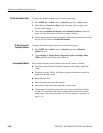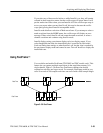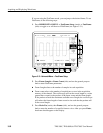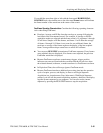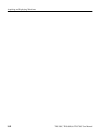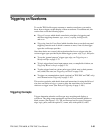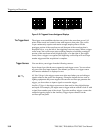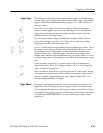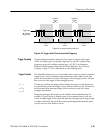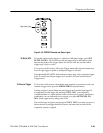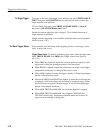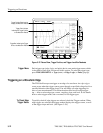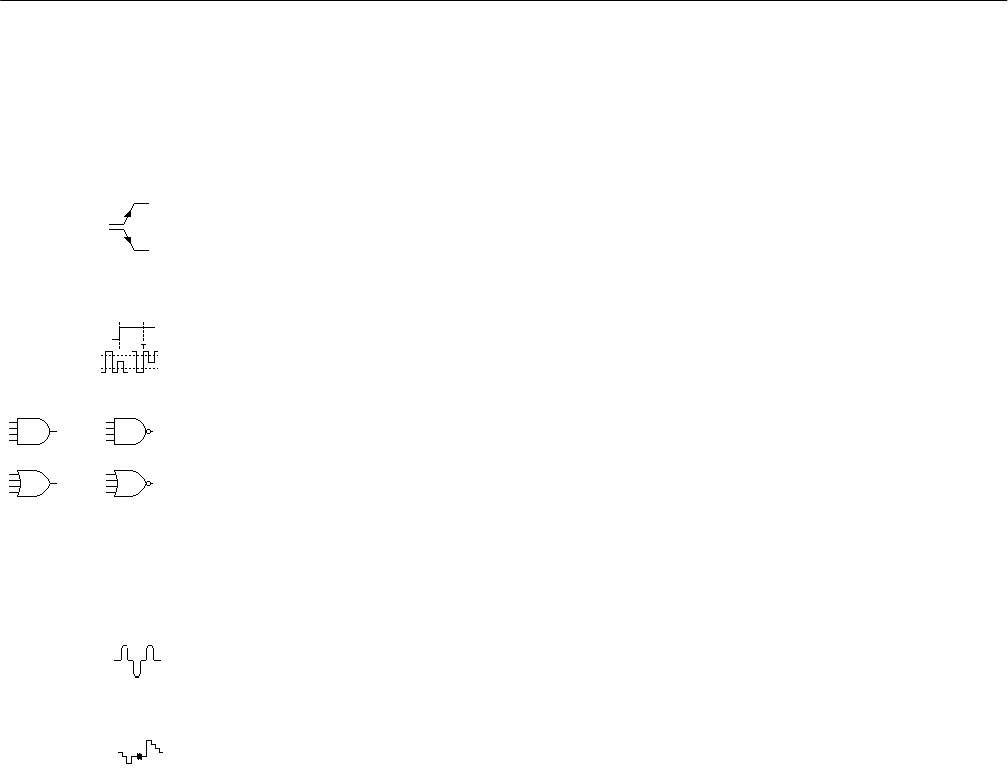
Triggering on Waveforms
TDS 500C, TDS 600B, & TDS 700C User Manual
3–65
The digitizing oscilloscope provides three standard triggers for the main trigger
system: edge, pulse, and logic. Option 05 provides a video trigger. The standard
triggers are described individually starting on page 3–72. A brief definition of
each type follows:
Edge is the “basic” trigger. You can use it with both analog and digital test
circuits. An edge trigger event occurs when the trigger source (the signal the
trigger circuit is monitoring) passes through a specified voltage level in the
specified direction (the trigger slope).
Pulse is a special-purpose trigger primarily used on digital circuits. The five
classes of pulse triggers are glitch, runt, width, slew rate and timeout. Pulse
triggering is available on the main trigger only.
Logic is a special-purpose trigger primarily used on digital logic circuits. Two of
the classes, pattern and state, trigger based on the Boolean operator you select
for the trigger sources. Triggering occurs when the Boolean conditions are
satisfied. A third class, setup/hold, triggers when data in one trigger source
changes state within the setup and hold times that you specify relative to a clock
in another trigger source. Logic triggers are available on the main trigger system
only.
Comm (available as option 2C) is a special trigger used on communication
signals. See tables 3–8 and 3–9, starting on page 3–103, for a list of supported
codes, standards and pulse forms.
Video (available as option 05) is a special trigger used on video circuits. It helps
you investigate events that occur when a video signal generates a horizontal or
vertical sync pulse. Supported classes of video triggers include NTSC, PA L ,
SECAM, and high definition TV signals.
The trigger mode determines how the oscilloscope behaves in the absence of a
trigger event. The oscilloscope provides two trigger modes, normal and automatic.
Normal trigger mode enables the oscilloscope to acquire a waveform only when
it is triggered. If no trigger occurs, the oscilloscope will not acquire a waveform.
(You can push FORCE TRIGGER to force the oscilloscope to make a single
acquisition.)
Trigger Types
Trigger Modes




